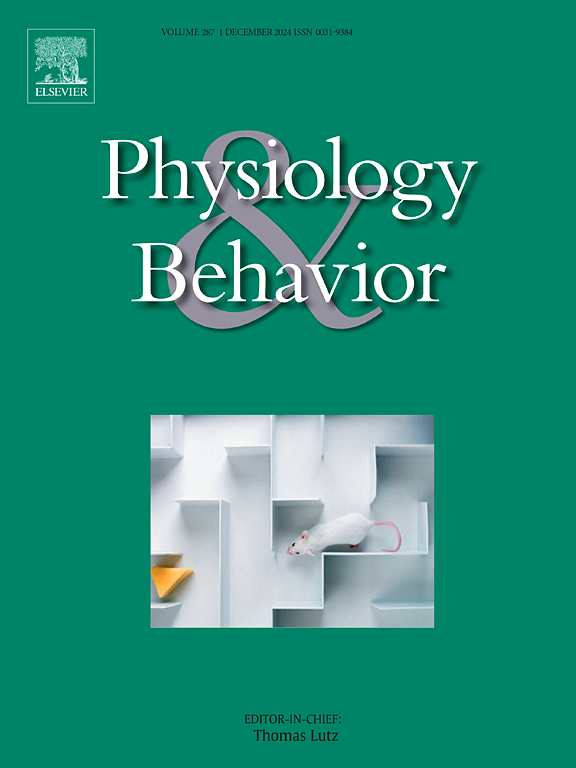Children’s satiety responsiveness moderates the association between food reinforcement and eating in the absence of hunger
IF 2.5
3区 医学
Q2 BEHAVIORAL SCIENCES
引用次数: 0
Abstract
The reinforcing value of food, a measure of motivation to obtain food, is associated with obesity in children. However, the extent to which food reinforcement predicts children’s intake under different contexts (i.e., meals fasted, eating in the absence of hunger-EAH) is unknown. We hypothesized that food reinforcement would be positively associated with intake at meals and EAH and examined whether satiety responsiveness (SR) moderates this association. As part of an ongoing 5-visit study, 96 children (7–9 years <95th BMI%) completed a Relative Reinforcing Value task (visit-V1) to assess willingness to work for candy and toys. Thirty minutes before the task, children consumed an ad libitum multi-item meal (grilled cheese, chicken tenders, etc.). On V3 and V4, children consumed the same meal followed 20 min later by presentation of nine snacks for measurement of EAH. SR was assessed from parent report (Children’s Eating Behavior Questionnaire). Mixed effect regressions showed a positive association between food reinforcement and energy intake at the meals (p < 0.01). SR was negatively associated with food reinforcement (p = 0.03) and moderated the association between food reinforcement and EAH (p = 0.03). In children with low SR (-1SD below mean), food reinforcement and EAH were positively associated (p = 0.03). No associations were seen in children with SR near or above the mean. This demonstrates that willingness to work for food is associated with greater energy intake during a meal across children and EAH among children with low sensitivity to satiety cues. Interventions promoting SR may help mitigate effects of food reinforcement on non-hunger-related intake.
儿童的饱腹反应调节食物强化与无饥饿感下进食之间的关系。
食物的强化价值是衡量获取食物动机的一种标准,它与儿童肥胖有关。然而,食物强化在多大程度上预测儿童在不同情况下的摄入量(即,禁食的膳食,在没有饥饿的情况下进食- eah)是未知的。我们假设食物强化与正餐摄入和EAH呈正相关,并研究了饱腹感反应(SR)是否调节了这种关联。作为一项正在进行的5次访问研究的一部分,96名儿童(7-9岁)
本文章由计算机程序翻译,如有差异,请以英文原文为准。
求助全文
约1分钟内获得全文
求助全文
来源期刊

Physiology & Behavior
医学-行为科学
CiteScore
5.70
自引率
3.40%
发文量
274
审稿时长
47 days
期刊介绍:
Physiology & Behavior is aimed at the causal physiological mechanisms of behavior and its modulation by environmental factors. The journal invites original reports in the broad area of behavioral and cognitive neuroscience, in which at least one variable is physiological and the primary emphasis and theoretical context are behavioral. The range of subjects includes behavioral neuroendocrinology, psychoneuroimmunology, learning and memory, ingestion, social behavior, and studies related to the mechanisms of psychopathology. Contemporary reviews and theoretical articles are welcomed and the Editors invite such proposals from interested authors.
 求助内容:
求助内容: 应助结果提醒方式:
应助结果提醒方式:


